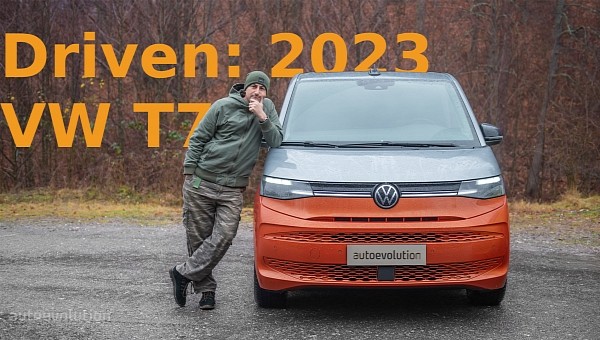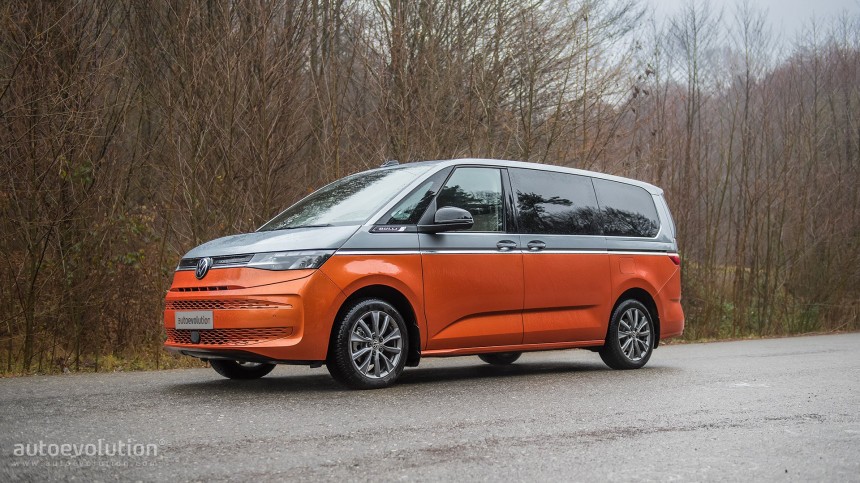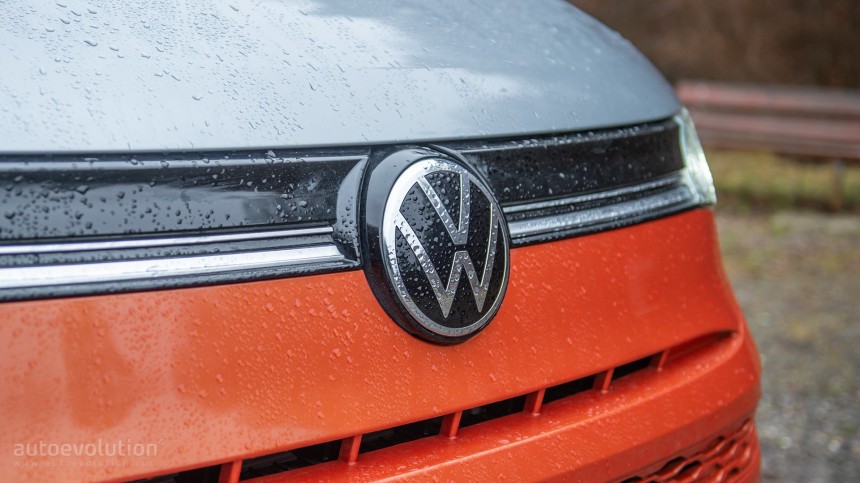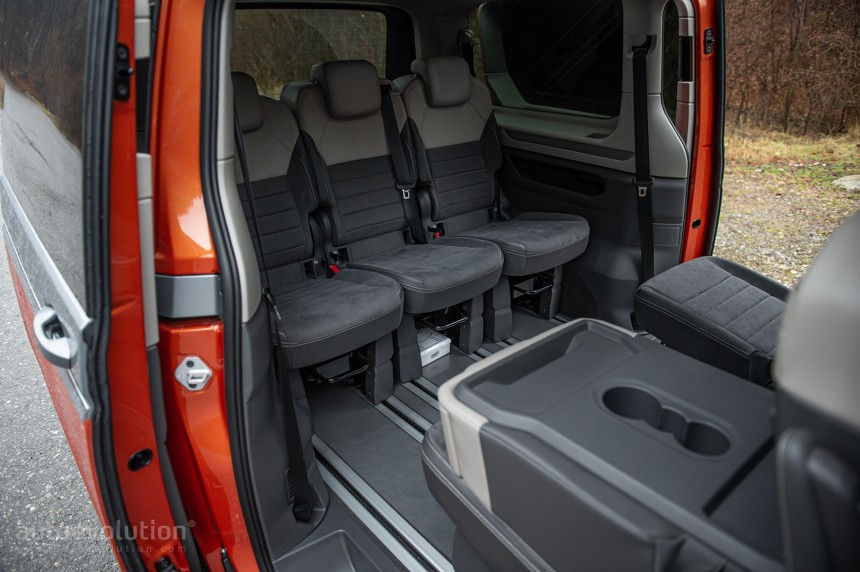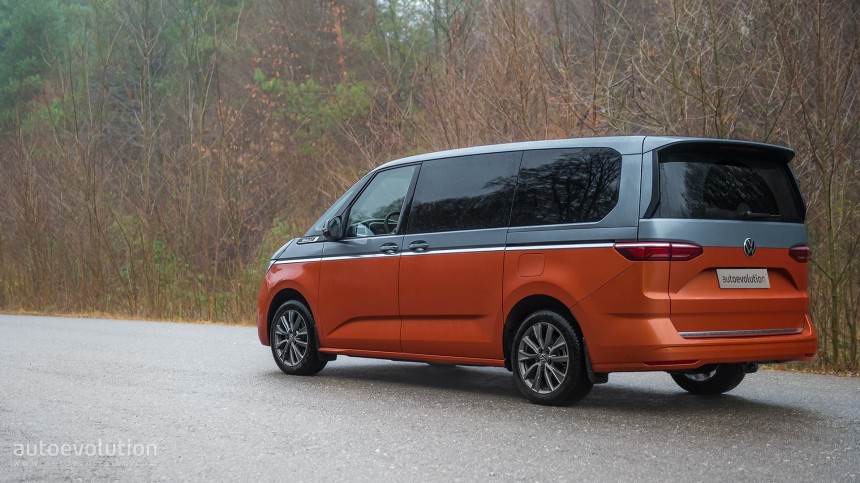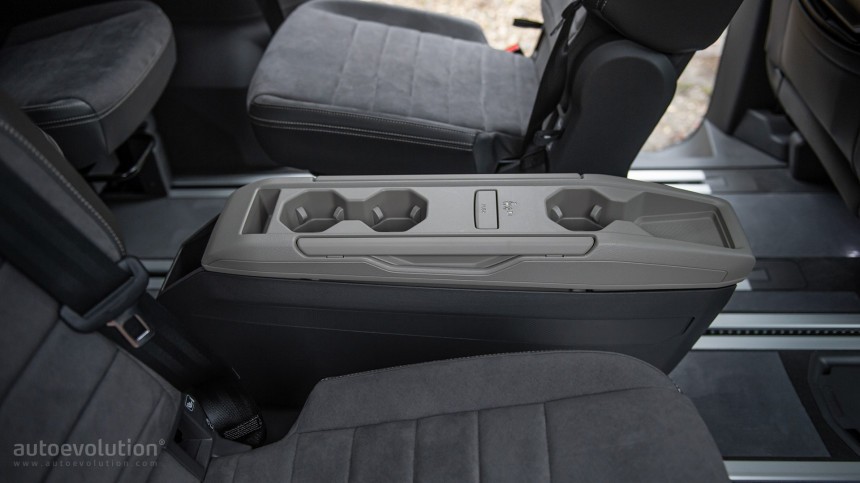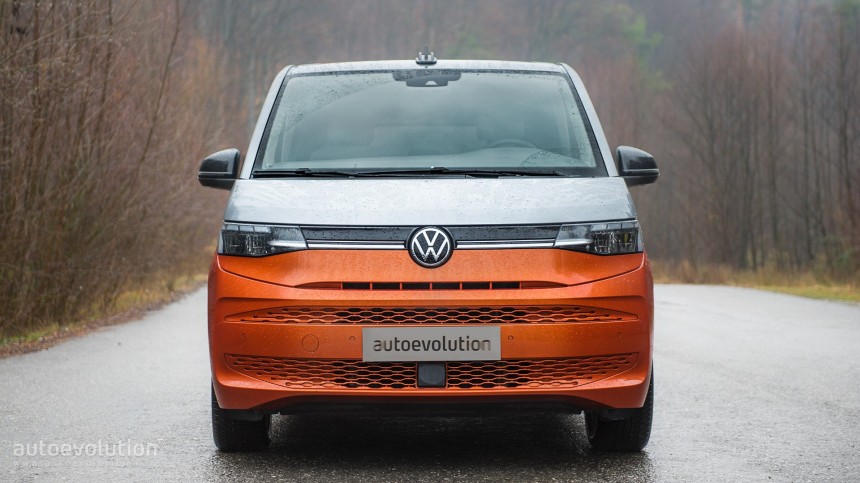Driven: 2023 Volkswagen Multivan T7 – Missed You
We can all agree that the world is full of injustice, but to experience that even in this pure and innocent automotive realm... hmmm. I'm tired of hearing that the French invented the MPV. No, sir, it was invented in the U.S. Plymouth Voyager and Dodge Caravan arrived in 1983 as 1984 model years, so the Renault Espace, launched in 1984, can wait in line.
Following this little rebellion moment, let me get back to reality and acknowledge the fact that the MPV seems to be on the verge of extinction, although it has all the right ingredients that could turn it into the next big thing in an electric-focused landscape.
And because we invented the MPV, it seems a little offensive that certain models are not available on our market, especially when we are talking about a model that, in some ways, is the spiritual successor to the VW T1's or T2's legacy. We sat down for a talk with the new Volkswagen Multivan to see whether we need to regret its absence or not!
And to avoid any speculation accusations, as far as I can remember, the VW T1 was based on the Beetle's platform. Following the epic thread, in 2023, here it is as the Beetle on the eighth-generation VW Golf. And the new VW Multivan, which has the T7 particle attached, is based on the MQB platform, the one on which the current Golf is built.
And because we are talking about a model that is unavailable on the North American market, we were privileged enough to "interview" two engines, a 2.0 TDI and a 1.4 TSI eHybrid. Yes, I know that diesel is no longer as popular as it used to be. But can it be a much more pleasant solution for certain models than a plug-in hybrid?
Previous Multivan versions were based on the light commercial platform of the Transporter. Probably, VW wanted a more refined Multivan, one that no longer had that commercial vehicle vibe, hence the decision for the new generation to be built on the MQB modular platform, which also hosts the new VW Golf.
In the case of the new T7 Multivan, we can no longer talk about two wheelbase versions – this part is identical, at 123 inches (3,124 mm), the only difference consisting in the length of the models. The short one is 195.7 inches (4,973 mm) long, while the long version boasts 203.6 inches (5,173 mm).
The short version gives off a more charming feel. In the current landscape dominated by XXXXXL SUVs and pickups, the short Multivan is somehow reminiscent of a "kei car," like a toy, whereas the same cannot be said regarding the long version. On the other hand, the adoption of the MQB platform led to the interior being organized differently, which influenced the overall design.
A T6 is a minivan with a clean line, while the T7's figure is slightly altered by the fact that the windshield line is no longer an extension of the hood. The front console is clearly delimited from the rest of the car's bodywork. Instead, VW scores elegantly in regard to the assembly quality. If you compare a T6.1 and a T7, both the slight alteration of the minivan line and the different arrangement of the seats in the car will be obvious.
Yes, the short version is not very spacious; honestly, I consider it an excellent family car in the 2+2 configuration if the individual seats are facing forward. You can opt for a 2+2+2 if the seats on the second row are facing the ones at the rear, so passengers can enjoy a decent amount of kneeroom.
As mentioned above, the long version seems to offer a little more room for passengers, but don't expect too much.
The new rail system developed by Volkswagen gets a big thumbs up. The seats slide extremely easily and can be just as easily detached to be repositioned and removed from the car. Furthermore, they are much lighter, so you won't risk a sciatic crisis should you try to lift one. The long version is definitely much friendlier; it comes close to what we have been accustomed to getting from a Multivan.
The car provides a good driving position, elevated and with a good view of the road. This is doubled by a proper perception of the dimensions, so you will be able to navigate the car through narrower streets without a problem. I would also like to mention an improvement in the interior materials. Some of them have evolved for the better. However, there are still quite a few hard plastics.
The driving position is extremely ergonomic, the interior offers plenty of storage areas, and if you also order the "mobile" island, you will benefit from extra storage space. The sliding center console can be positioned between the front seats – and you get additional cup holders and some storage spaces – or set to the back, where it can convert into a table.
The declared electric range is 31.6 miles (51 km), but we experienced about 25 miles (40.23 km), admittedly, in winter conditions, with the climate control set at 75°F (24 Celsius degrees) and the seat heating system turned on. In other words, we believe that the promised 31.6 miles (50.8 km) are achievable under optimal temperature conditions.
In electric mode, the car is incredibly pleasant – quiet and nimble. You just might get a little confused when the combustion engine comes to life – acoustically confused, that is – as we're used to a "T" being a diesel. For daily needs, in urban environments, you can use the car in EV mode if you are the cautious type and make sure the battery is fully charged in the morning. The urban environment is also where fuel consumption is the lowest. Once you take it on a long trip and switch to hybrid mode, you'll notice that the model offers a range of 300-380 miles (482.8-611.55 km), a tribute paid to the 11.9-gallon (45 liters) tank, whereas non-electrified versions feature a 15.8-gallon (60 liters) tank.
Yes, Volkswagen and diesel engines don't make for a very happy mix around here, but a 2.0 TDI shines on this model. A model that, despite a weight of 4,797 lb (2,176 kg), moves nimbly. Although we had 150 horsepower (152 ps) and 265 lb-ft (360 Nm) at our disposal, the car offers consistent and, most importantly... relaxed acceleration.
Power is delivered smoothly, which increases the comfort of the passengers. In addition, with this engine, the car regains its potential to cover 600 miles (965.6 km) on a full tank. An average fuel consumption of over 39 mpg (6 l/100 km) is easily achievable in extra-urban areas. The sweet spot of the engine and gearbox revolves around 40-55 mph (64 - 89 kph), which allows for average values of over 47 mpg (5 l/100 km) to be reached. We enjoyed such values, with five people in the car, plus luggage.
In urban areas, we revolved around 26 mpg (9 l/100 km), which was another pleasant surprise. In other words, the diesel engine still stands as a solution that perfectly complements certain models. Another advantage is the light driving mode, somewhere just over 2,000 rpm when driving on the highway at 80 mph (129 kph). Unlike the hybrid version, this 2.0 TDI is barely heard inside the cabin.
The diesel version seems more coherent and dynamic. The mechanical braking system in the 2.0 TDI is much more intuitive and easy to adjust. The plug-in hybrid version features a little inconsistency in the deceleration when switching from regenerative braking to mechanical braking. The suspension copes admirably with filtering the imperfections on the road surface, even with the car fully loaded. The body roll is also well-controlled, so you won't experience any overturning sensations if you take a more vigorous turn.
As it is a front-wheel-drive, in the case of powerful accelerations, some traction loss may emerge, as the front axle needs to handle loads exceeding 5,000 lb (2,268 kg).
The driving position is relaxing, both in terms of seat posture and the wide view of the road. The A-pillar that obstructs visibility, especially on left turns, comes as a slight downside. On the other hand, the excellent 360-degree view from the driver's seat totally makes up for it – the elevated driving position and the generously-sized lateral windows provide an extra sense of confidence in intersections with limited visibility, such as some roundabouts.
The fact that the cabin is filled with USB C slots, two for each row of seats, is a big plus. If I were to order a Multivan, I would definitely choose insulated windows as an optional feature. Even at temperatures of 37°F (3 Celsius degrees), you can easily feel the cold radiating while driving. Then, although the panoramic roof provides a phenomenal illumination of the cabin, the fact that it cannot be covered by any curtain means that during summer, you will have to use sunscreen while driving.
I only checked the Apple CarPlay connectivity, which can be accessed both wired and wirelessly. A closer shortcut for adjusting the brightness of the dashboard and central console would also come in handy.
Car access is very easy, and I must give VW a big round of applause for the new electrically-operated sliding side doors. You can open them via buttons on the dashboard, buttons on the B pillars, or by using the key. Moreover, the handling of the doors is quick and silent, boosting the perceived quality.
The huge tailgate is electrically operated as well. Make sure you keep enough space behind when parking, so you can have access to the trunk. When performing backing maneuvers. I would also advise you to use the guide displayed on the screen in order to know when you can safely open the tailgate. With a minimum volume of 514 liters (18.2 cu-ft), the trunk is generous enough for a whole family.
And because we invented the MPV, it seems a little offensive that certain models are not available on our market, especially when we are talking about a model that, in some ways, is the spiritual successor to the VW T1's or T2's legacy. We sat down for a talk with the new Volkswagen Multivan to see whether we need to regret its absence or not!
And to avoid any speculation accusations, as far as I can remember, the VW T1 was based on the Beetle's platform. Following the epic thread, in 2023, here it is as the Beetle on the eighth-generation VW Golf. And the new VW Multivan, which has the T7 particle attached, is based on the MQB platform, the one on which the current Golf is built.
And because we are talking about a model that is unavailable on the North American market, we were privileged enough to "interview" two engines, a 2.0 TDI and a 1.4 TSI eHybrid. Yes, I know that diesel is no longer as popular as it used to be. But can it be a much more pleasant solution for certain models than a plug-in hybrid?
Design Evaluation
From the classic T1 to T6, things were simple and clear. Volkswagen released one of the most robust and beloved MPVs/vans on the market. Now we have a new Volkswagen Multivan, which the Germans call the T7, but with no connection to the legendary Transporter.In the case of the new T7 Multivan, we can no longer talk about two wheelbase versions – this part is identical, at 123 inches (3,124 mm), the only difference consisting in the length of the models. The short one is 195.7 inches (4,973 mm) long, while the long version boasts 203.6 inches (5,173 mm).
The short version gives off a more charming feel. In the current landscape dominated by XXXXXL SUVs and pickups, the short Multivan is somehow reminiscent of a "kei car," like a toy, whereas the same cannot be said regarding the long version. On the other hand, the adoption of the MQB platform led to the interior being organized differently, which influenced the overall design.
A T6 is a minivan with a clean line, while the T7's figure is slightly altered by the fact that the windshield line is no longer an extension of the hood. The front console is clearly delimited from the rest of the car's bodywork. Instead, VW scores elegantly in regard to the assembly quality. If you compare a T6.1 and a T7, both the slight alteration of the minivan line and the different arrangement of the seats in the car will be obvious.
Interior Assessment
The difference in inches between the two bodywork versions can be found primarily in the trunk, where the tested version, with its minimum of 18.1 cu-ft (512 liters), offers an extra 5 cu-ft (142 liters) compared to the short version. I might be slightly subjective, but I was left with the impression that some inches were also gained in the rear seats area, especially in terms of kneeroom when the individual seats are facing forward.Yes, the short version is not very spacious; honestly, I consider it an excellent family car in the 2+2 configuration if the individual seats are facing forward. You can opt for a 2+2+2 if the seats on the second row are facing the ones at the rear, so passengers can enjoy a decent amount of kneeroom.
As mentioned above, the long version seems to offer a little more room for passengers, but don't expect too much.
The new rail system developed by Volkswagen gets a big thumbs up. The seats slide extremely easily and can be just as easily detached to be repositioned and removed from the car. Furthermore, they are much lighter, so you won't risk a sciatic crisis should you try to lift one. The long version is definitely much friendlier; it comes close to what we have been accustomed to getting from a Multivan.
The car provides a good driving position, elevated and with a good view of the road. This is doubled by a proper perception of the dimensions, so you will be able to navigate the car through narrower streets without a problem. I would also like to mention an improvement in the interior materials. Some of them have evolved for the better. However, there are still quite a few hard plastics.
Driving Take
Let's start by talking about the 1.4 TSI eHybrid version. It is a plug-in hybrid credited with a total power of 218 horsepower (221 ps) and 258 lb-ft (350 Nm) of torque. The combustion engine is a 1.4 TSI, a four-cylinder inline engine of 1,395 cc that develops 150 horsepower (152 ps) and 184.3 lb-ft (250 Nm) of torque. The electric motor develops 116 horsepower (118 ps) and 243.3 lb-ft (330 Nm) of torque and is powered by a 13 kWh battery. This can be charged to the maximum using a wallbox of up to 3.6 kW. At a normal 2.3 kW outlet, it takes about 5 hours to charge, while at 3.6 kW, it takes 3.6 hours.The declared electric range is 31.6 miles (51 km), but we experienced about 25 miles (40.23 km), admittedly, in winter conditions, with the climate control set at 75°F (24 Celsius degrees) and the seat heating system turned on. In other words, we believe that the promised 31.6 miles (50.8 km) are achievable under optimal temperature conditions.
In electric mode, the car is incredibly pleasant – quiet and nimble. You just might get a little confused when the combustion engine comes to life – acoustically confused, that is – as we're used to a "T" being a diesel. For daily needs, in urban environments, you can use the car in EV mode if you are the cautious type and make sure the battery is fully charged in the morning. The urban environment is also where fuel consumption is the lowest. Once you take it on a long trip and switch to hybrid mode, you'll notice that the model offers a range of 300-380 miles (482.8-611.55 km), a tribute paid to the 11.9-gallon (45 liters) tank, whereas non-electrified versions feature a 15.8-gallon (60 liters) tank.
Yes, Volkswagen and diesel engines don't make for a very happy mix around here, but a 2.0 TDI shines on this model. A model that, despite a weight of 4,797 lb (2,176 kg), moves nimbly. Although we had 150 horsepower (152 ps) and 265 lb-ft (360 Nm) at our disposal, the car offers consistent and, most importantly... relaxed acceleration.
Power is delivered smoothly, which increases the comfort of the passengers. In addition, with this engine, the car regains its potential to cover 600 miles (965.6 km) on a full tank. An average fuel consumption of over 39 mpg (6 l/100 km) is easily achievable in extra-urban areas. The sweet spot of the engine and gearbox revolves around 40-55 mph (64 - 89 kph), which allows for average values of over 47 mpg (5 l/100 km) to be reached. We enjoyed such values, with five people in the car, plus luggage.
The diesel version seems more coherent and dynamic. The mechanical braking system in the 2.0 TDI is much more intuitive and easy to adjust. The plug-in hybrid version features a little inconsistency in the deceleration when switching from regenerative braking to mechanical braking. The suspension copes admirably with filtering the imperfections on the road surface, even with the car fully loaded. The body roll is also well-controlled, so you won't experience any overturning sensations if you take a more vigorous turn.
As it is a front-wheel-drive, in the case of powerful accelerations, some traction loss may emerge, as the front axle needs to handle loads exceeding 5,000 lb (2,268 kg).
Everyday Living
First of all, I find this car much more appropriate for everyday life than an SUV, for example. The freedom of configuration is incommensurably greater, and if needed, you can benefit from a cargo volume similar to that of a van.The fact that the cabin is filled with USB C slots, two for each row of seats, is a big plus. If I were to order a Multivan, I would definitely choose insulated windows as an optional feature. Even at temperatures of 37°F (3 Celsius degrees), you can easily feel the cold radiating while driving. Then, although the panoramic roof provides a phenomenal illumination of the cabin, the fact that it cannot be covered by any curtain means that during summer, you will have to use sunscreen while driving.
I only checked the Apple CarPlay connectivity, which can be accessed both wired and wirelessly. A closer shortcut for adjusting the brightness of the dashboard and central console would also come in handy.
Car access is very easy, and I must give VW a big round of applause for the new electrically-operated sliding side doors. You can open them via buttons on the dashboard, buttons on the B pillars, or by using the key. Moreover, the handling of the doors is quick and silent, boosting the perceived quality.
The huge tailgate is electrically operated as well. Make sure you keep enough space behind when parking, so you can have access to the trunk. When performing backing maneuvers. I would also advise you to use the guide displayed on the screen in order to know when you can safely open the tailgate. With a minimum volume of 514 liters (18.2 cu-ft), the trunk is generous enough for a whole family.
Test Drive Roundup
The Volkswagen Multivan T7 writes a new chapter. The German manufacturer has chosen to diversify its range of MPVs. We have this refined T7, then there is the charismatic I.D. Buzz and we are awaiting the future Transporter, which will be built in partnership with Ford. Diversifying the model options could be a recipe for success, considering that it covers the need for the expression of a wider range of customers.PROS:
- Visibility
- Diesel engine-gearbox combination
- Modularity
- Electric sliding doors
- Storage spaces
CONS:
- Limited room in the rear seats
- Minor infotainment system errors
- Limited range for the plug-in hybrid version
- Model weight
